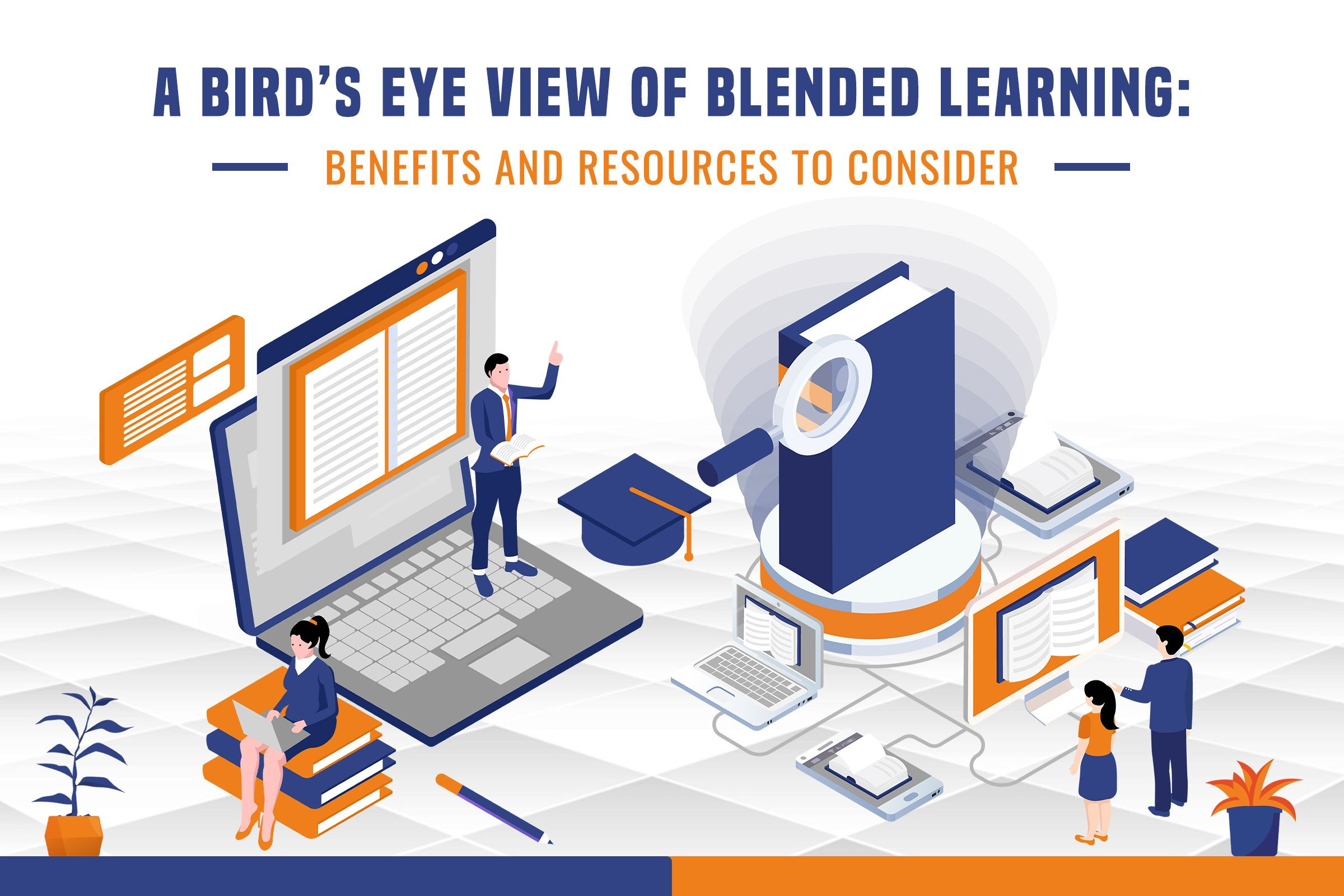
A Bird’s Eye View Of Blended Learning: Benefits And Resources To Consider
In the ever-evolving landscape of education, the integration of technology has revolutionized the way we learn. Blended learning, also known as hybrid learning, has emerged as a powerful strategy that combines traditional classroom instruction with online resources and digital tools. This holistic approach offers a dynamic and engaging learning experience, catering to diverse learning styles. In this comprehensive article, we will delve into the world of blended learning, exploring its benefits, highlighting essential resources, and addressing frequently asked questions.
A Bird’s Eye View Of Blended Learning: Benefits And Resources To Consider
Blended learning brings together the best of both worlds: face-to-face interaction and the flexibility of online learning. By seamlessly integrating technology into education, it opens up a plethora of benefits:
Enhanced Learning Flexibility
Blended learning offers students the flexibility to access educational content at their own pace. Traditional classroom constraints are alleviated, allowing learners to review materials, participate in discussions, and complete assignments according to their schedules. This personalized approach fosters a deeper understanding of the subject matter.
Improved Engagement
The combination of in-person interactions and online activities enhances engagement. Interactive online platforms, multimedia resources, and gamified content capture students' attention and make learning more exciting. This engagement leads to higher retention rates and a positive attitude towards learning and the completion rate of Leadership Training Courses Online gets improved.
Individualized Learning Paths
Blended learning recognizes the diversity of learners. Educators can tailor content to address individual needs, whether through supplementary resources for struggling students or advanced materials for those seeking a challenge. This customization promotes a supportive learning environment.
Access to a Variety of Resources
One of the standout features of blended learning is the access to a wide range of resources. Online libraries, video lectures, simulations, and interactive quizzes enrich the learning experience. This diversity accommodates different learning preferences and helps reinforce concepts effectively.
Development of Digital Literacy
In an increasingly digital world, proficiency with online tools is crucial. Blended learning equips students with essential digital literacy skills as they navigate online platforms for Leadership Training Courses Online, collaborate virtually, and differentiate between reliable and unreliable online sources.
Preparation for the Future
Blended learning reflects the evolving nature of work, where digital skills are integral. By experiencing online collaboration, virtual teamwork, and tech-driven learning, students are better prepared for the demands of the modern workforce.
Effective Time Management
Learning how to manage time efficiently is a valuable life skill. Blended learning cultivates this skill by requiring students to balance their time between traditional classes, online assignments, and personal commitments.
Continuous Learning Beyond the Classroom
Learning doesn't stop when the class ends. Blended learning promotes continuous learning through online discussion boards, peer-to-peer interactions, and supplementary materials. This cultivates a culture of curiosity and exploration.
Eco-Friendly Approach
Reducing paper consumption and commuting to classes, blended learning has a positive impact on the environment. The digitalization of materials and the reduction of the need for physical classrooms contribute to sustainability efforts.
Collaborative Learning Opportunities
Blended learning encourages collaboration among students. Online forums, group projects, and virtual study sessions facilitate interaction, and Best Leadership Training Programs enable students to learn from their peers and build teamwork skills.
Exploring Key Resources for Blended Learning
To fully harness the potential of blended learning, a variety of resources are available:
Learning Management Systems (LMS)
Corporate Learning Management Systems like Moodle, Canvas, and Blackboard serve as centralized hubs for course content, assignments, and communication. They offer tools for grading, discussion boards, and document sharing, streamlining the learning process.
Interactive Multimedia
Engaging multimedia elements such as videos, animations, and podcasts provide diverse learning experiences. These resources cater to visual and auditory learners, making complex concepts more understandable.
E-Books and Online Libraries
Digital textbooks and online libraries provide easy access to a wealth of reference materials. Students can quickly search for specific information, bookmark pages, and take notes digitally, enhancing the study process.
Virtual Simulations
For subjects that require practical understanding, virtual simulations offer immersive learning experiences. From scientific experiments to historical reconstructions, simulations bridge the gap between theory and practice.
Video Conferencing Tools
Virtual classrooms facilitated by video conferencing tools like Zoom or Microsoft Teams enable real-time interactions. Students and instructors can collaborate, discuss, and share ideas, fostering an inclusive learning environment.
Gamified Learning Platforms
Gamification adds an element of fun to learning. Corporate Learning Management Systems supporting gamification transform assessments into interactive games, motivating students to actively participate and review course material.
Final Words
In a rapidly evolving educational landscape, blended learning stands as a beacon of innovation. By merging traditional teaching methodologies with cutting-edge digital tools, this approach offers a plethora of benefits that enhance engagement, flexibility, and personalization. As educators and learners embrace this transformative approach, the resources and strategies discussed in this article will undoubtedly shape the future of education.
